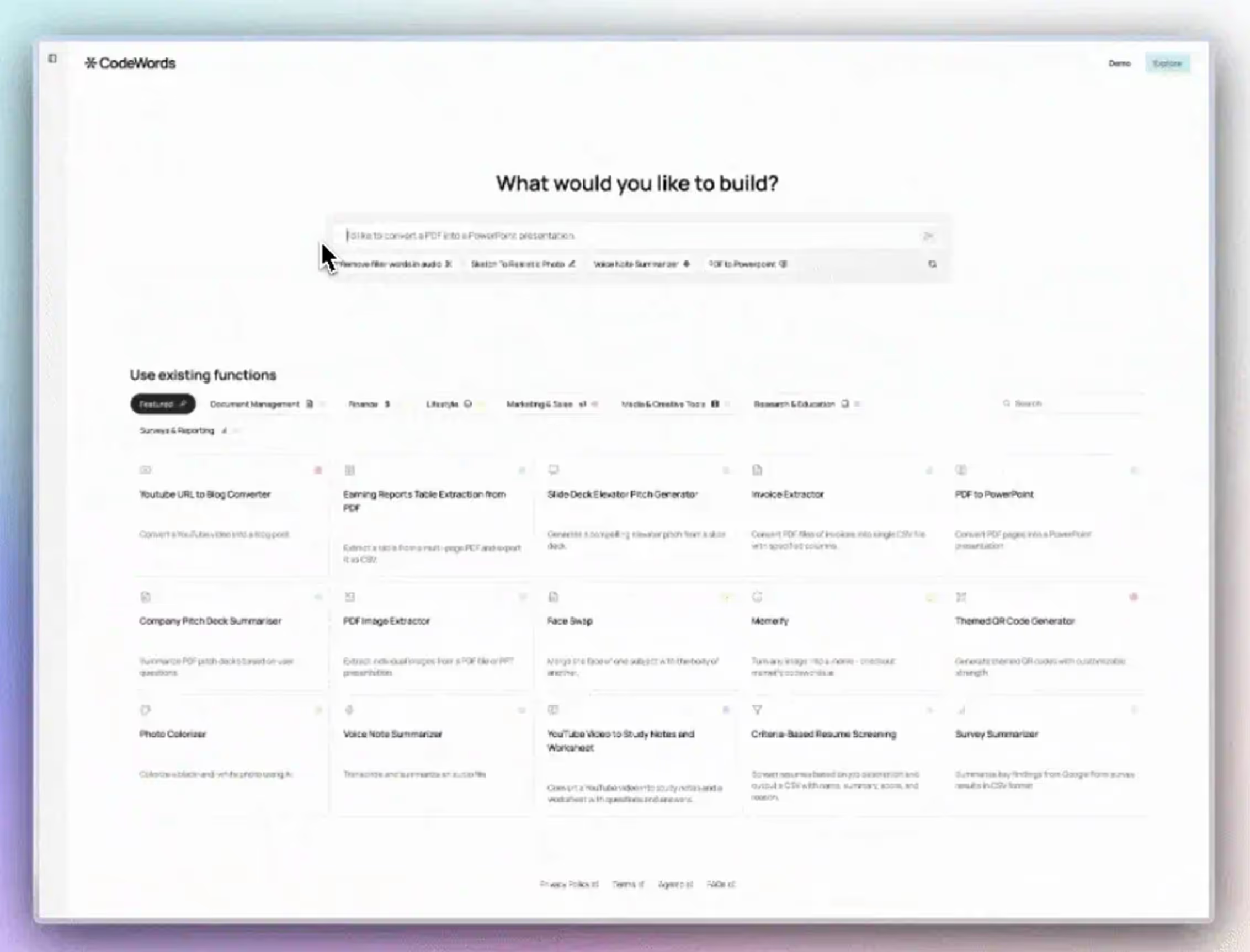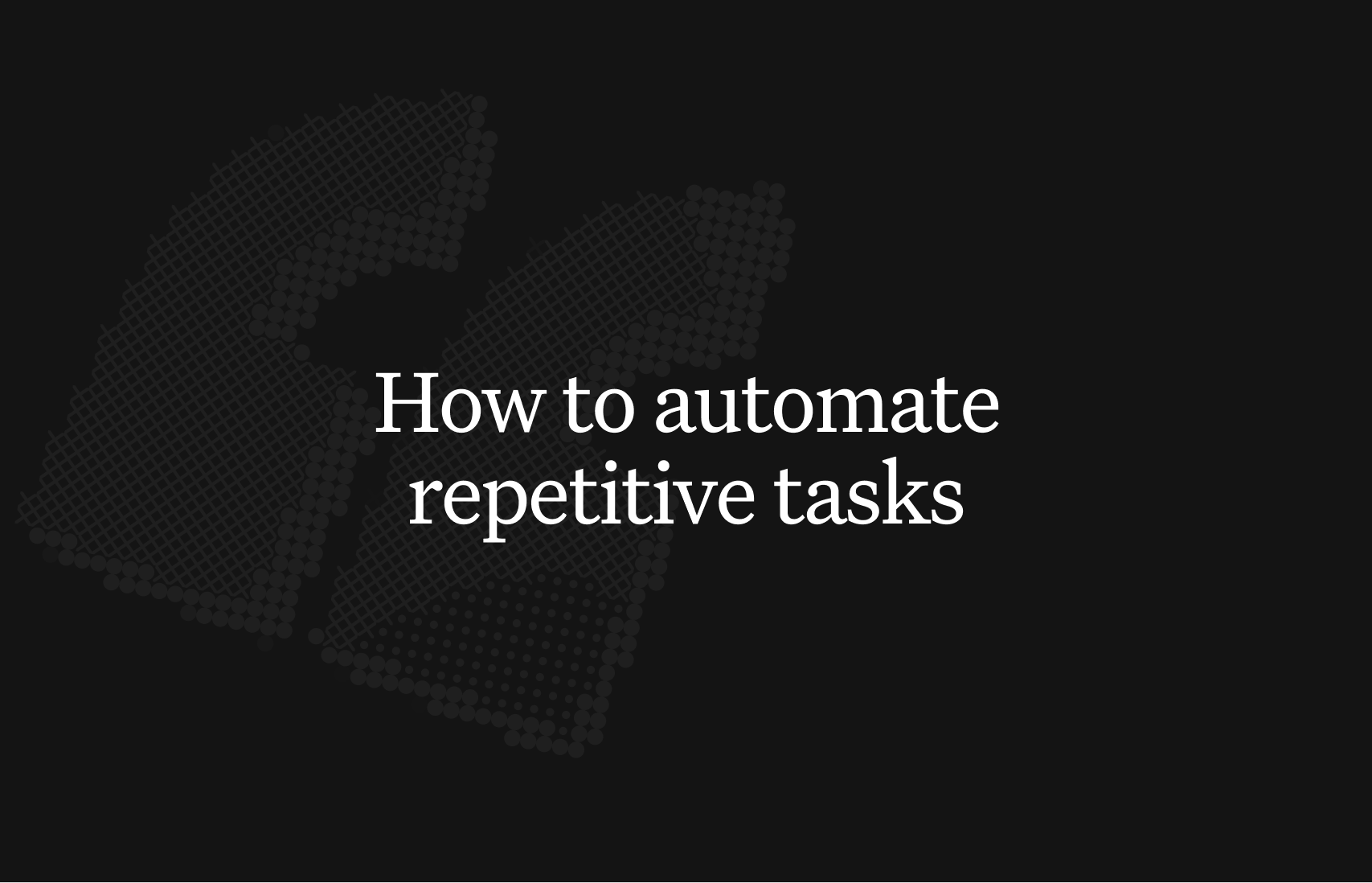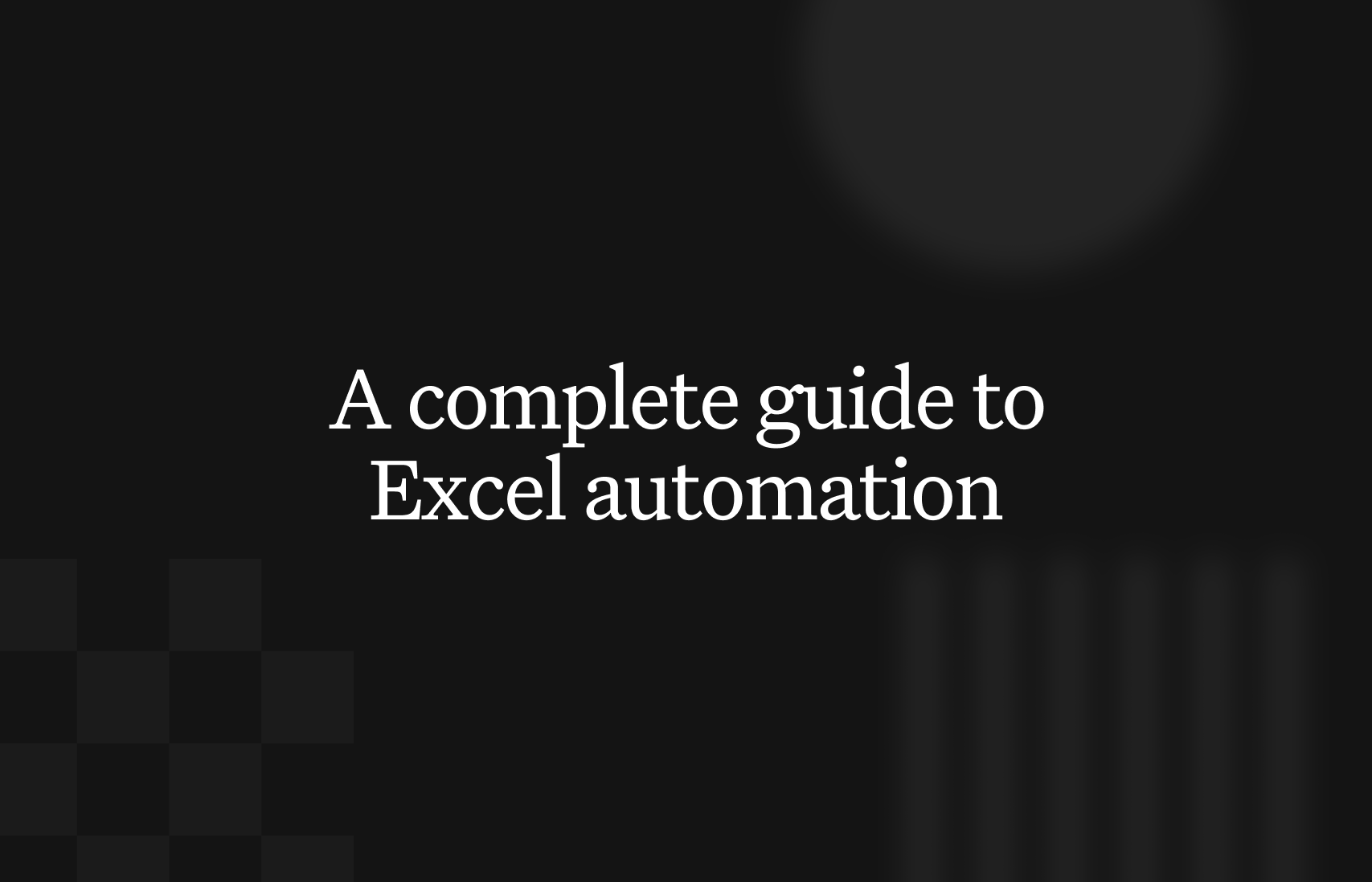The best no code automation tools act as a magical apprentice, transforming your intent into action without a single line of code. For experienced founders, the core challenge isn't a lack of ideas but a lack of time — the constant drag of manual work is a hidden tax on innovation. This is where automation casts its spell, turning tedious execution into strategic advantage.
The top platforms let you build complex workflows just by describing what you want. A 2023 Gartner report projects that by 2025, over 70% of new applications developed by enterprises will use low-code or no-code technologies. This guide helps you find the right assistant for your specific needs, evaluating everything from visual builders to chat-native platforms like CodeWords that turn plain language into powerful workflows. Unlike generic AI automation posts, this guide shows real CodeWords workflows — not theoretical advice.
TL;DR: The top no code automation tools
- Speed is King: By 2025, 70% of new enterprise apps will use no-code/low-code tech (Gartner, 2023), making rapid deployment a key differentiator for staying competitive.
- Chat vs. Canvas: CodeWords uses a chat-native AI to build workflows from plain text, bypassing the steep learning curve of traditional drag-and-drop visual editors found in tools like Zapier or Make.
- From Manual to Magical: The right tool can reduce operational overhead by up to 80% (Forrester, 2024), shifting focus from repetitive tasks to high-impact strategy.
Most operators feel trapped by rigid, visual-only builders that require endless clicking just to get a simple task running. We promise a different approach, one where your ideas become automations in seconds, boosting operational efficiency by up to 80%. The solution is more intuitive than you might think, focusing on conversation over configuration.
What are no code automation tools?
No code automation tools are software platforms that allow users to create automated workflows connecting different applications and services without writing any code. Think of them as a digital spellbook. Instead of learning the arcane language of programming, you use visual interfaces or plain-language commands to conjure connections between your apps. For example, you can create a spell that automatically saves every new Gmail attachment to a specific Dropbox folder or adds a new lead from a Typeform submission directly into your Salesforce CRM. The core magic is the pre-built "integrations" that act as translators between thousands of different software tools, enabling them to talk to each other and perform tasks on your behalf.
This approach empowers anyone on a team, from marketing to operations, to become a builder and solve their own process problems. It dramatically reduces reliance on engineering teams for simple integrations, allowing founders and operators to reclaim countless hours lost to repetitive, manual data entry and task management.
How do no code automation tools work?
The mechanism behind these tools is elegantly simple. They operate on a foundation of "triggers" and "actions." A trigger is an event that initiates the automation—like receiving a new email or a form being submitted. An action is the task that the tool performs in response. This "if this, then that" logic is the core incantation of all no code automation tools.
Here’s the deal: behind the user-friendly interface, the platform manages a complex network of Application Programming Interfaces (APIs). APIs are the messengers that allow different software applications to communicate with each other. When you build a workflow, you're essentially telling the automation tool which messengers to use and what messages to send. For example, when you set up a trigger for "New row in Google Sheets," the tool constantly polls the Google Sheets API. Once it detects a new row, it executes the action you defined, like sending a message through the Slack API to a specific channel.
CodeWords workflow: Onboarding a new client
Prompt: "When a new client signs up in Stripe, create a new folder for them in Google Drive, add a new row to our 'Client Tracker' Airtable base, and then send a welcome email from our Gmail account using a template."
Output:
- A new, dedicated Google Drive folder is created using the client's name.
- A new record is instantly added to the Airtable base with the client's Stripe details.
- A personalized welcome email is sent from a designated Gmail account.
Impact:
- Reduces new client onboarding time from 15 minutes of manual work to under 5 seconds.
- Eliminates human error in data entry across three different platforms.
- Ensures a consistent and immediate welcome experience for every new customer.
The platform handles all the technical heavy lifting, including authentication, data mapping, and error handling. This allows you to focus purely on the logic of your process—the what—without getting bogged down in the technical details of the how. You can learn more about this unique conversational model in the official beta introduction for CodeWords.
Which no code automation tools are best for my team?
1. CodeWords
One of the newest AI automation tools out there is CodeWords. It takes you from idea to automation faster than traditional automation tools by removing the need to drag-and-drop, configure, and debug nodes. Cody, the platform's AI automation assistant, builds your automation for you, as well as automatically testing, debugging, and deploying it when it's ready. The platform goes further than traditional "if this, then that" logic, creating automations through code, without the user requiring any technical knowledge.
The platform's main strength is that it empowers anyone to build powerful automations, making it great for founders regardless of their technical knowledge. The chat interface makes it much quicker and easier to turn concepts into time-saving systems.
2. Zapier
As one of the original and most recognized no-code automation tools, Zapier has built its reputation on being the universal translator between thousands of web applications. It allows users to create automated workflows, called "Zaps," that trigger an action in one app based on an event in another. This simple "if this, then that" logic forms the foundation for connecting everything from a Google Sheet to a Salesforce record.
Its core strength is its unparalleled library of over 7,000 app integrations, making it the default choice for businesses needing to connect mainstream and niche SaaS tools. The visual builder is intuitive, allowing for multi-step Zaps with conditional logic (Paths), delays, and built-in formatters to manipulate data on the fly. However, this visual approach can become complex to manage at scale. Many users find themselves exploring different Zapier alternatives as their task usage and workflow complexity grows.
3. Make (formerly Integromat)
Make, which rebranded from Integromat, positions itself as a visually-driven automation platform that grants users exceptional granular control over their workflows. It's designed for those who want to see exactly how data moves between applications, offering a dynamic, flowchart-like interface where users connect modules to build "scenarios." This visual approach demystifies complex logic and allows for intricate data manipulation and error handling directly on the canvas.
Its primary distinction among other no code automation tools is the deep visibility into each operation's execution and data payload. This makes debugging intuitive, as users can click on any step to inspect the inputs and outputs. The platform is particularly powerful for complex processes that require conditional routing, iterating through data sets, and custom API calls, making it a favorite for technically-minded users who still want to avoid writing code.
4. IFTTT
If Zapier is the universal translator for business applications, IFTTT (If This, Then That) is the friendly conductor for your digital life, connecting everything from smart home devices to mobile apps. It was one of the first platforms to bring the power of simple "if this, then that" logic to a mainstream audience. Its core strength lies in its consumer-first approach, making it exceptionally easy to automate tasks across personal services and IoT devices.
The platform operates using "Applets," which are pre-built or custom connections between two or more services. With a huge catalog focused on smart home, social media, and mobile functionality, IFTTT provides the easiest on-ramp for anyone new to automation. While less suited for complex, multi-step business logic, its simplicity and vast device integration library make it an indispensable tool for personal productivity and smart environment control. Find out more at ifttt.com.
5. n8n
Positioned as an open-source, "source-available" workflow automation platform, n8n carves out a unique space for technical teams and developers. It offers a powerful, node-based visual editor that feels more like a developer's toolkit than a pure no-code interface, giving users granular control over their data and workflows. This approach makes it one of the more flexible and extensible tools for those who aren't afraid to get a little technical.
Its core differentiator is the ability to self-host, which provides complete control over data privacy, infrastructure, and costs. For companies with strict compliance requirements or those wanting to avoid vendor lock-in, this is a significant advantage. The platform blends no-code convenience with low-code power, allowing users to build custom nodes or inject Javascript directly into their workflows.
6. Pipedream
Pipedream uniquely bridges the gap between no-code simplicity and developer-centric power. It is designed for those who want the speed of visual automation builders but occasionally need to drop into code for custom logic, complex API requests, or data transformations. This hybrid approach makes it a standout, catering to a more technical user base without alienating those who prefer to stay entirely visual.
Its core proposition is flexibility. Users can build workflows with pre-built actions from over 2,900 integrated apps or inject custom serverless code steps using Node.js, Python, or Go. This makes it ideal for handling advanced integrations and processes that standard no-code platforms might struggle with, all within a single, cohesive workflow.
7. Microsoft Power Automate
For businesses deeply embedded in the Microsoft ecosystem, Power Automate serves as the native automation layer, connecting everything from Outlook and Teams to Dynamics 365 and Azure. It extends beyond simple cloud-based workflows, offering a powerful Robotic Process Automation (RPA) component for automating legacy desktop applications. This dual capability makes it a strong contender for enterprises looking to unify both modern SaaS and traditional on-premise system automation.
What sets it apart is its enterprise-grade governance, security, and integration with Microsoft Dataverse. While its interface can be more complex than others, it provides the features required for mission-critical processes, including process mining to identify automation opportunities. It’s built for organizations where compliance and deep integration with existing Microsoft infrastructure are non-negotiable.
8. Workato
Positioned as an enterprise-grade Integration Platform as a Service (iPaaS), Workato goes beyond simple task automation to provide a scalable, secure, and governed environment. It is one of the more powerful no-code tools designed for complex, mission-critical processes that often involve connecting core business systems like ERPs, CRMs, and data warehouses. Its low-code/no-code interface allows both business and IT teams to collaborate on building sophisticated automations.
Workato's core strength lies in its enterprise-ready features, including advanced lifecycle management, granular role-based access controls, and a framework for security and compliance. Instead of simple workflows, it builds "recipes" which can be version-controlled and tested. This makes it a preferred choice for larger companies that need to manage automation at scale without sacrificing governance.
9. Tray.io
Tray.io is built for complex, cross-departmental workflows that demand high security and governance. It provides a powerful visual builder that goes beyond simple "if this, then that" logic, enabling organizations to construct sophisticated automations that can handle large-scale data processing and mission-critical business processes. This makes it one of the go-to no code automation tools for mid-market and enterprise companies.
Its strength lies in its ability to manage automations at scale, offering features like audit logs, access controls, and clear usage visibility. Tray.io is also innovating with its AI agent builder, Merlin, which supports multiple LLMs to create intelligent automated agents. This focus on governance and advanced capabilities makes it a top contender for businesses that have outgrown simpler tools.
10. Airtable Automations
For teams whose work revolves around a central database, Airtable Automations provides a powerful, native way to automate workflows without ever leaving the platform. Instead of treating automation as an external layer, Airtable builds it directly into its bases, allowing users to trigger actions based on data changes, scheduled times, or user interactions within an Airtable Interface.
Its key advantage is its deep integration with the data itself. You can trigger a workflow when a record is created, a field is updated, or a record enters a specific view. For more advanced needs, its ability to run scripts and incorporate AI offers a higher ceiling than many other no-code tools. You can also explore how to build more complex Airtable automations by connecting it with other platforms.
11. Google AppSheet
As Google's native entry into the no-code space, AppSheet functions as a powerful bridge between your data and custom business applications. It allows users to build mobile and web apps directly from data sources like Google Sheets, Excel, and various databases. This approach focuses first on creating a data-driven app and then layering automation on top through "bots" that trigger workflows.
Its key differentiator is its deep integration with the Google Workspace ecosystem. For businesses already operating within Google Drive, Sheets, and Calendar, AppSheet provides a seamless way to build internal tools for field data capture, inventory management, or project tracking. The platform's strength in creating offline-capable mobile apps makes it a prime choice for teams that need to work on the go.
12. Parabola
Parabola carves out a specific niche by focusing intensely on data transformation. It acts as a visual, drag-and-drop toolkit for anyone who needs to repeatedly import, clean, combine, and export data. Think of it as a repeatable, automated assembly line for your spreadsheets and databases, turning messy inputs into clean, structured reports without requiring any code. Learn more at parabola.io.
Its core strength lies in its flow-based canvas, where users chain together steps like pulling data from an API, joining it with a CSV file, filtering rows, and finally sending the result to a tool like Shopify or a Google Sheet. This makes it exceptionally powerful for operations, e-commerce, and analytics teams that are often buried in manual spreadsheet tasks.
Which no code automation tools should I avoid?
Most people believe that more integrations are always better. The opposite is true. A platform with 7,000 generic connections is useless if it doesn't offer deep, reliable support for the exact applications your team lives in every day. The myth of the "universal connector" often leads to frustration with shallow integrations that only handle basic triggers and actions, forcing you back into manual work for more nuanced tasks.
Why? The mechanism behind this is simple: breadth often comes at the expense of depth. Building and maintaining a high-quality, feature-rich integration for a single complex app like Salesforce or NetSuite requires significant engineering investment. Platforms chasing the highest app count often build shallow connectors that tick a box but fail in real-world application. Prioritize tools that demonstrate a deep, native-like integration with your most critical software stack over those that simply boast the longest list of logos.
No-code automation: 12-tool comparison
FAQs: No code automation tools (2025)
What is the difference between no-code and low-code?
No-code platforms are designed for non-technical users, using visual interfaces or chat to build applications without writing code. Low-code platforms are for developers, speeding up work with pre-built components but still requiring coding for custom logic.
Can no-code tools handle complex workflows?
Yes. Many modern platforms can manage sophisticated logic, including conditional paths, data transformation, and multi-step sequences. Tools like Make and CodeWords are particularly adept at handling complexity without requiring you to write any code.
Are no code automation tools secure for business data?
Reputable platforms use enterprise-grade security measures like OAuth for app connections and data encryption. However, it's crucial to review each platform's security policies and certifications (like SOC 2) to ensure they meet your company's compliance standards.
Your New Magical Apprentice Awaits
The journey through the world of no-code automation tools reveals a powerful truth: the ability to conjure connections between systems is no longer a privilege reserved for developers. We've explored a dozen powerful platforms, each offering a unique spell-book for transforming manual processes into self-sufficient engines of productivity. Your decision now isn't about picking the "best" tool in a vacuum; it's about finding the right magical apprentice for your team's specific ambitions.
You might think that mastering a visual drag-and-drop interface is the only path forward. But there's a problem most tools ignore: the fastest way to express an idea is through language. Instead of asking you to build the machine, CodeWords invites you into a conversation. You simply describe the outcome you want in plain English. Our AI assistant, Cody, instantly interprets your request, builds the workflow, connects the APIs, and even debugs potential issues.
The implication is that automation is no longer a specialized skill gated behind a complex interface. It becomes a universal capability, accessible to anyone who can describe a problem. This frees your organization to focus on what truly matters, reclaiming thousands of hours for creative, high-impact work.






